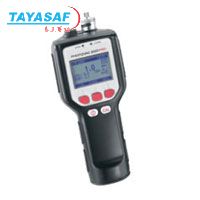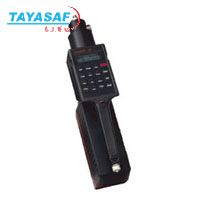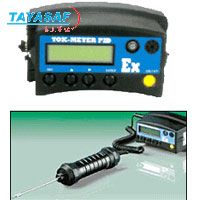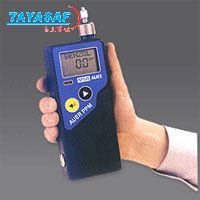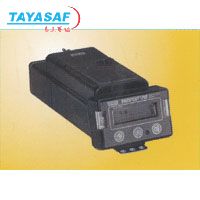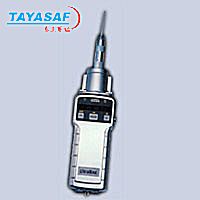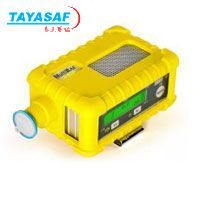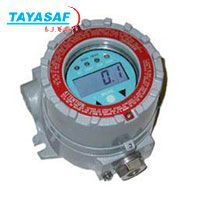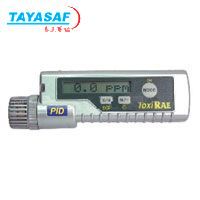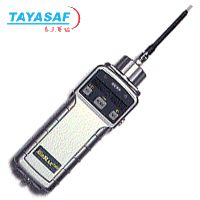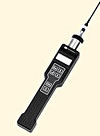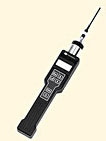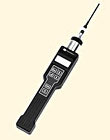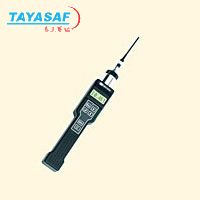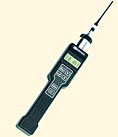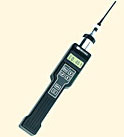Features
Microprocessor based modular design
Electrochemical Sensor Technology
Industry standard 4-20mA output
Field adjustable Alarm level
Single point Non-Intrusive calibration
Bright 3 digit LED display
Displays gas concentration in ppm, calibration prompts and sensor fault codes
Suitable for use in Hazardous Location
Description
Model PT395-H2S is a microprocessor-based sensor designed to detect hydrogen sulfide in parts per million (ppm) level. The unit features easy one-man calibration initiated by simply activating a magnetic switch and applying the gas.
The complete sensor consists of a stainless steel sensor head assembly, a user connection board and a transmitter board assembly. All of the sensor electronics are enclosed in an explosion proof instrument box. Sensor modular design allows easy maintenance, troubleshooting and high reliability. Standard features also includes a linear 4-20mA signal output proportional to the full scale detection range and two (2) fully programmable alarm relays and a Fault relay.
The sensor transmitter board includes a three (3) digit LED display for continuous indication of the gas concentration. The calibration mode, alarm and fault status of the sensor are also indicated on the digital display. In the normal operating mode the digital display and 4-20mA reading is proportional to the gas concentration detected by the sensor. In the calibration mode the digital display indicates the calibration status, alarm relay outputs are inhibited and analog signal output is set to 2 mA to avoid any false alarm by the control monitor. In the sensor fault mode the transmitter drops the output signal to < 1 mA.
Specifications
Sensor Type
Electrochemical Fuel Cell
Measuring Range
0 to 100 parts per million (ppm)
Repeatability
± 2% Full scale
Zero Drift
< 5% per year
Response Time
T90 < 30 seconds with 100% FS gas applied
Classification
Class I, division 1, Groups B, C & D
Operating Temperature
-4°F to +122°F (-20°C to +50°C)
Operating Humidity
15% to 90% RH, non-condensing
Mechanical Specifications
Length: 7 inches (178 mm)
Width: 5 inches (127 mm)
Height: 4.5 inches (114 mm)
Display
Bright 3 digit LED display
Status Indicators
Three-digit display for gas concentration
Alarm relay status, calibration mode and
sensor fault status.
Approvals
CSA / ATEX for use in Hazardous Locations CSA Standard C22.2 No 30-M1985 & C22.2 No 142-M1987
Input Power
14-28 VDC. 24 VDC nominal
Power Consumption
< 2 Watt. Typical 65mA @ 24 VDC
Alarm Relays
3 Alarm Relays, Low, High and Fault Fully programmable. 0 to Full scale Range of the sensor, Latching or Non- Latching
Relay Ratings
SPDT Form “C” type Relay contacts 0.5 Amp @ 125 VAC or 2 Amps @ 30 VDC
Analog Output
Linear 4-20mA (300 Ohms max. load)
2.0 mA - Calibration mode
< 1.0 mA - Sensor malfunction
Calibration
Non-Intrusive activated by internal magnetic switch
Cable Requirement
3 wire shielded cable. Max loop resistance 20 Ohms
Cable Entry Hub
¾” NPT Female
Features
Microprocessor based modular design
Electrochemical Sensor Technology
Industry standard 4-20mA output
Field adjustable Alarm level
Single point Non-Intrusive calibration
Bright 3 digit LED display
Displays gas concentration in ppm, calibration prompts and sensor fault codes
Suitable for use in Hazardous Location
Description
Model PT395-H2S is a microprocessor-based sensor designed to detect hydrogen sulfide in parts per million (ppm) level. The unit features easy one-man calibration initiated by simply activating a magnetic switch and applying the gas.
The complete sensor consists of a stainless steel sensor head assembly, a user connection board and a transmitter board assembly. All of the sensor electronics are enclosed in an explosion proof instrument box. Sensor modular design allows easy maintenance, troubleshooting and high reliability. Standard features also includes a linear 4-20mA signal output proportional to the full scale detection range and two (2) fully programmable alarm relays and a Fault relay.
The sensor transmitter board includes a three (3) digit LED display for continuous indication of the gas concentration. The calibration mode, alarm and fault status of the sensor are also indicated on the digital display. In the normal operating mode the digital display and 4-20mA reading is proportional to the gas concentration detected by the sensor. In the calibration mode the digital display indicates the calibration status, alarm relay outputs are inhibited and analog signal output is set to 2 mA to avoid any false alarm by the control monitor. In the sensor fault mode the transmitter drops the output signal to < 1 mA.
Specifications
Sensor Type
Electrochemical Fuel Cell
Measuring Range
0 to 100 parts per million (ppm)
Repeatability
± 2% Full scale
Zero Drift
< 5% per year
Response Time
T90 < 30 seconds with 100% FS gas applied
Classification
Class I, division 1, Groups B, C & D
Operating Temperature
-4°F to +122°F (-20°C to +50°C)
Operating Humidity
15% to 90% RH, non-condensing
Mechanical Specifications
Length: 7 inches (178 mm)
Width: 5 inches (127 mm)
Height: 4.5 inches (114 mm)
Display
Bright 3 digit LED display
Status Indicators
Three-digit display for gas concentration
Alarm relay status, calibration mode and
sensor fault status.
Approvals
CSA / ATEX for use in Hazardous Locations CSA Standard C22.2 No 30-M1985 & C22.2 No 142-M1987
Input Power
14-28 VDC. 24 VDC nominal
Power Consumption
< 2 Watt. Typical 65mA @ 24 VDC
Alarm Relays
3 Alarm Relays, Low, High and Fault Fully programmable. 0 to Full scale Range of the sensor, Latching or Non- Latching
Relay Ratings
SPDT Form “C” type Relay contacts 0.5 Amp @ 125 VAC or 2 Amps @ 30 VDC
Analog Output
Linear 4-20mA (300 Ohms max. load)
2.0 mA - Calibration mode
< 1.0 mA - Sensor malfunction
Calibration
Non-Intrusive activated by internal magnetic switch
Cable Requirement
3 wire shielded cable. Max loop resistance 20 Ohms
Cable Entry Hub
¾” NPT Female




